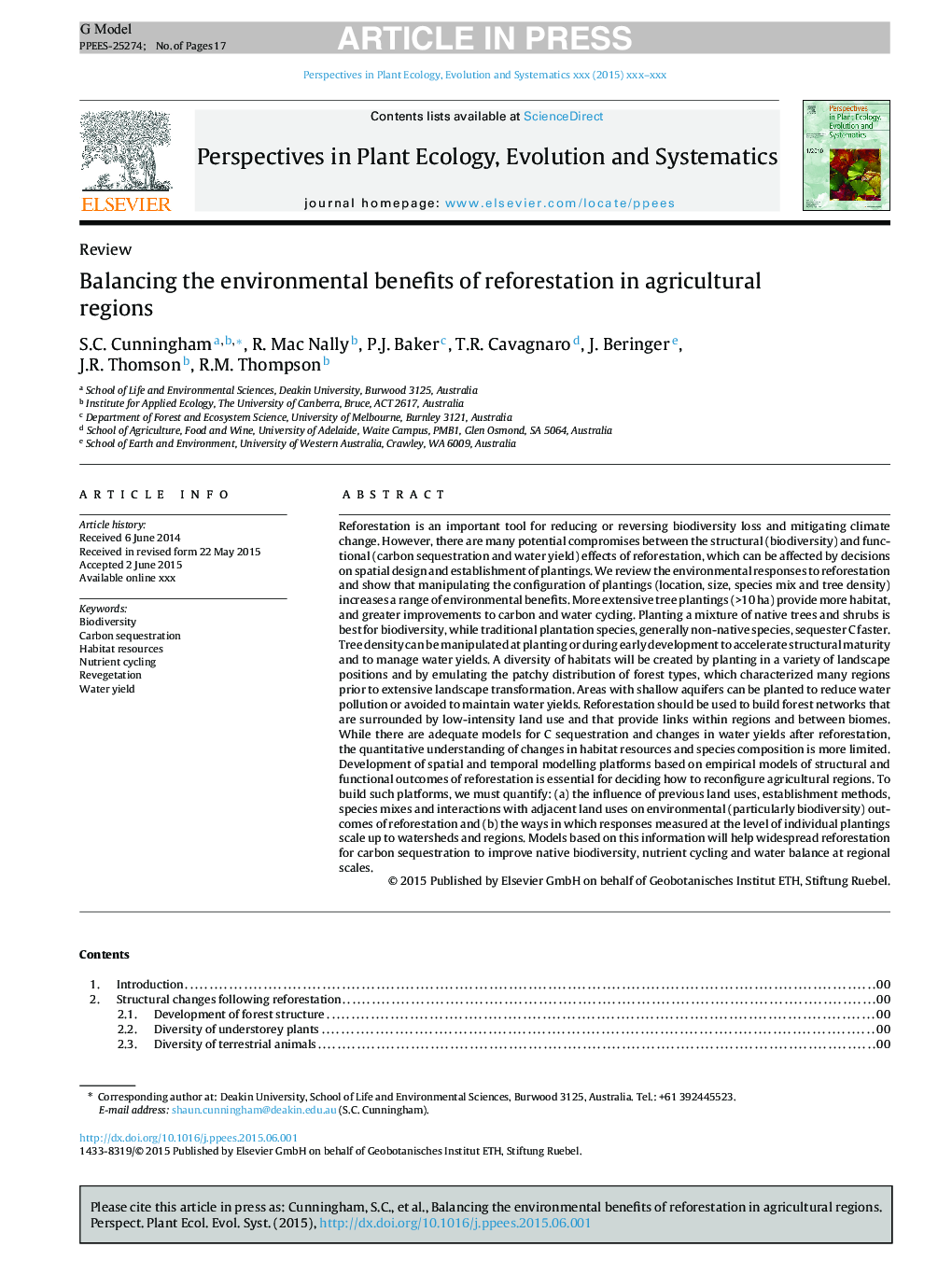| کد مقاله | کد نشریه | سال انتشار | مقاله انگلیسی | نسخه تمام متن |
|---|---|---|---|---|
| 6305725 | 1307034 | 2015 | 17 صفحه PDF | دانلود رایگان |
عنوان انگلیسی مقاله ISI
Balancing the environmental benefits of reforestation in agricultural regions
ترجمه فارسی عنوان
تعادل مزایای زیست محیطی جنگل زدایی در مناطق کشاورزی
دانلود مقاله + سفارش ترجمه
دانلود مقاله ISI انگلیسی
رایگان برای ایرانیان
کلمات کلیدی
تنوع زیستی، تداخل کربن، منابع انسانی، دوچرخه سواری تغذیه پرورش ماهی عملکرد آب،
موضوعات مرتبط
علوم زیستی و بیوفناوری
علوم کشاورزی و بیولوژیک
بوم شناسی، تکامل، رفتار و سامانه شناسی
چکیده انگلیسی
Reforestation is an important tool for reducing or reversing biodiversity loss and mitigating climate change. However, there are many potential compromises between the structural (biodiversity) and functional (carbon sequestration and water yield) effects of reforestation, which can be affected by decisions on spatial design and establishment of plantings. We review the environmental responses to reforestation and show that manipulating the configuration of plantings (location, size, species mix and tree density) increases a range of environmental benefits. More extensive tree plantings (>10Â ha) provide more habitat, and greater improvements to carbon and water cycling. Planting a mixture of native trees and shrubs is best for biodiversity, while traditional plantation species, generally non-native species, sequester C faster. Tree density can be manipulated at planting or during early development to accelerate structural maturity and to manage water yields. A diversity of habitats will be created by planting in a variety of landscape positions and by emulating the patchy distribution of forest types, which characterized many regions prior to extensive landscape transformation. Areas with shallow aquifers can be planted to reduce water pollution or avoided to maintain water yields. Reforestation should be used to build forest networks that are surrounded by low-intensity land use and that provide links within regions and between biomes. While there are adequate models for C sequestration and changes in water yields after reforestation, the quantitative understanding of changes in habitat resources and species composition is more limited. Development of spatial and temporal modelling platforms based on empirical models of structural and functional outcomes of reforestation is essential for deciding how to reconfigure agricultural regions. To build such platforms, we must quantify: (a) the influence of previous land uses, establishment methods, species mixes and interactions with adjacent land uses on environmental (particularly biodiversity) outcomes of reforestation and (b) the ways in which responses measured at the level of individual plantings scale up to watersheds and regions. Models based on this information will help widespread reforestation for carbon sequestration to improve native biodiversity, nutrient cycling and water balance at regional scales.
ناشر
Database: Elsevier - ScienceDirect (ساینس دایرکت)
Journal: Perspectives in Plant Ecology, Evolution and Systematics - Volume 17, Issue 4, July 2015, Pages 301-317
Journal: Perspectives in Plant Ecology, Evolution and Systematics - Volume 17, Issue 4, July 2015, Pages 301-317
نویسندگان
S.C. Cunningham, R. Mac Nally, P.J. Baker, T.R. Cavagnaro, J. Beringer, J.R. Thomson, R.M. Thompson,
